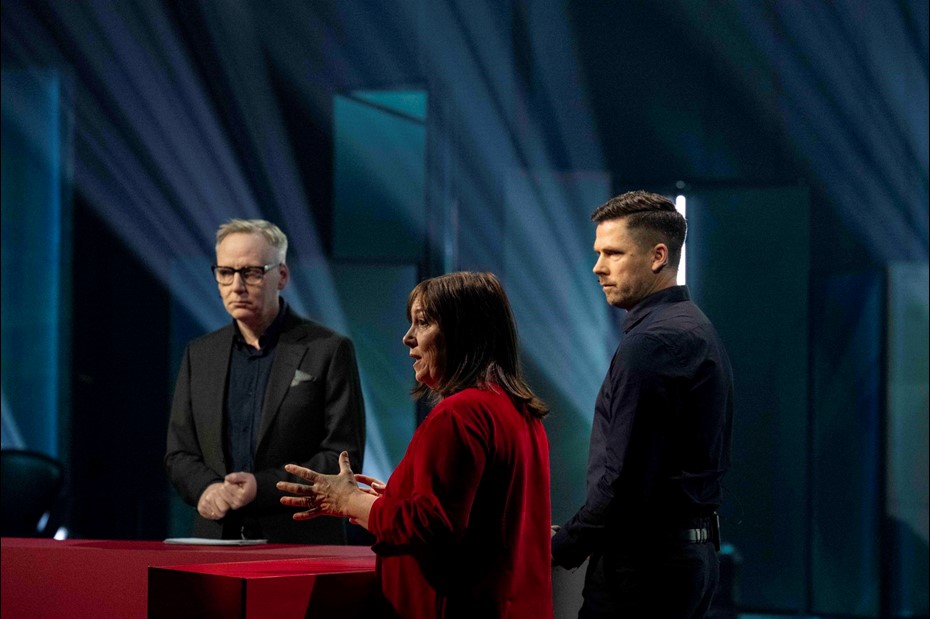Look at these pictures. One is real, the other is created by artificial intelligence. Can you tell which is which?
Not that easy, right? Australian researchers had people do a similar exercise, and concluded that it was impossible for them to distinguish. In fact, the fake images were rated as more realistic.
Recently, artificially generated nude images of Taylor Swift received over 27 million views in less than a day. In Bangladesh, fake videos have caused an uproar and disrupted the election. The videos were made by software that only costs around 20 dollars a month, and that anyone can use. In the USA, voters were called with a fake message from Joe Biden, asking them to stay home on the day of the primary election in New Hampshire.
2024 is the biggest election year in history: Seven out of ten of the world's largest countries will elect new leaders. And the opportunities for manipulation have never been greater. Waves of false information are crashing over us, and we don't have the tools to protect ourselves. We have never been more vulnerable.
Artificial intelligence gives us tools that can be used constructively. Humanity has been given the opportunity to create fantastic videos and images, just by entering a few words into a box on a website. But those who want to harm us have also gained a new arsenal. Fake news become more numerous, appear more professional and cost virtually nothing to make. This is an industrial revolution for the troll factories in Russia trying to manipulate how we perceive the world, and who want to sow doubt about what is true and what is not.
We may end up doubting absolutely everything. This is poison for a democracy. In the public discourse in the US, it seems impossible to agree on even basic facts. This is not just a problem for the media or politicians. It's a problem for all of us. What's at stake is the most important thing we have in democracies: trust in each other, and in democracy itself.
The amount of disinformation and fake news will only increase. We cannot do anything about the noise artificial intelligence creates through fake images, videos and text. However, what we can do is to strengthen the signal of verified information – making it easier for you and me to tell the difference.
In Media City Bergen, the fight against fake news is in full force. With support from Agenda Vestlandet, we are collaborating with major players like New York Times, BBC and Microsoft. Journalists, technologists and academia are working together in Project Reynir to find solutions. We believe there can be technological solutions to technologically created problems.

Laura Ellis (BBC) and Helge O. Svela (Media City Bergen) in a conversation with Kjetil H. Dale about Project Reynir and Project Origin at Vestlandskonferansen 2024. Photo: Thor Brødreskift
The goal is to create something that makes it easier for ordinary people to distinguish fake from real. With the help of a form of digital watermarks in images, it will be possible for both editors and ordinary media users to be sure that images and video have not been tampered with on the way from the photographer's lens to your mobile screen. If we manage that, we are a big step closer to solving the problem of artificially created noise.
Maybe you think it's strange that such a huge problem for the whole world should be solved in Bergen and in Western Norway. But it's not so strange. First, the media and media technology environment in Bergen is world-class. Second, we are used to sorting things out ourselves here in Western Norway. We have never sat and waited for others to come and clean up when the landslide has gone. We put on our boots and fetch the shovel and start working, and usually a neighbor comes and asks if she can help. We fix it ourselves – together.
When we need to distinguish between what is real and fake on the internet, we also need help from you. Therefore, you will get three tips if you are concerned about artificially created images and fake news:
- Be skeptical of what you come across on the internet, especially when you scroll on social media. Be mindful to check if what you see can really be true before you share it further.
- Use editorial media, like Bergens Tidende or TV 2. The people who work there are trained to verify information, thus decreasing the likelihood that what you are reading is false.
- Don't be discouraged. It's humans who have created the technology that creates these problems. We can also create technology that solves them.
PS: It's the image to the left that is real.
